Dickies, a brand highly regarded for rugged workwear and timeless style, has been a cornerstone of fashion for nearly a century. Established in 1922 as the Williamson-Dickie Manufacturing Company, its journey from humble beginnings to global prominence is marked by a legacy of bold logos and distinctive tags that trace the evolution of both the brand and its loyal audience. From its origins as a bib-overall manufacturer catering to American families, to the vibrant subcultures that embraced it on the streets and in skate parks, Dickies embodies the spirit of resilience, innovation, and authenticity.
Throughout its history, Dickies has stayed true to its roots while adapting to the changing times. The 874 Original Work Pant is a testament to this legacy, seamlessly transitioning from factory floors to the fashion world as a symbol of both utility and style. Popularized by skaters, musicians, and style icons, the 874 remains a staple that reflects Dickies’ unwavering commitment to quality and versatility.
The evolution of Dickies’ logos and tags reflects the company’s journey from a small manufacturer to a global leader in workwear. Their rich heritage and commitment to quality remain evident in their iconic logos and tags, making them an enduring brand for generations.
In this comprehensive look back at the brand’s rich heritage, we’ll explore the stories behind each logo and tag evolution, and how these iconic identifiers have come to define not just the brand but entire generations of workwear enthusiasts. Whether you’re rocking the 874s at a job site, a concert, or a skate park, Dickies continues to prove that classic never goes out of style.
Rare 1980s Dickies Advert
How to tell if Dickies is vintage from the logo
The logos have evolved significantly over the years, each era reflecting a unique facet of Dickies’ storied history. The early “Dickie’s Best” logo from the 1920s exuded craftsmanship and pride, set against a striking crimson background. As the brand navigated through the 20th century, the designs shifted to mirror changing attitudes—from the rustic red and sunflower-yellow oval logo of the 1930s, which highlighted its roots in Fort Worth, Texas, to the rope-bordered logo of the 1940s, reinforcing durability during wartime production. By the time the 2000s rolled around, the now-iconic italicized “Dickies” wordmark firmly cemented the brand as a modern-day symbol of progress and energy.
1920s to 1930s Dickies logo
- Features “Dickie’s Best” in bold cursive script
- Text in indigo and sky-blue hues
- Crimson granulated background with light stitching

1920s to 1930s Dickies logo
1930s to 1940s Dickies logo
- Sunflower-yellow oval background with rustic red text
- Black backdrop creates a warm, bold contrast
- “FORT WORTH” inscribed beneath the brand name
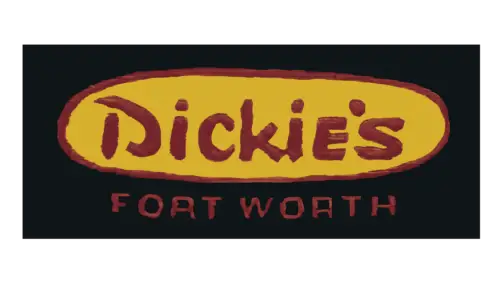
1930s to 1940s Dickies logo
1940s to 2005 Dickies logo
- Rope-like border symbolizes ruggedness and durability
- Prominently displays “Guaranteed” under the “Dickies” name
- Hand-drawn letters highlight attention to detail

1940s to 2005 Dickies logo
2005 to now Dickies logo
- Bright red oval background with horizontal yellow buckle
- Italicized “Dickies” wordmark inside a blue parallelogram
- Movement and energy conveyed through the inclined text
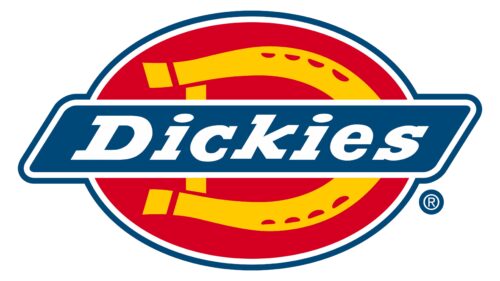
2005 to now Dickies logo
How to tell if Dickies is vintage from the tags
When exploring the world of vintage Dickies tags, one notable feature stands out: many of these iconic pieces were originally made in the USA, reflecting the brand’s deep-rooted American heritage. During the mid-to-late 20th century, Dickies’ manufacturing was based stateside, which imbued their workwear with a distinct sense of quality and craftsmanship that appealed to blue-collar workers and anyone seeking durable, no-nonsense apparel. This commitment to domestic production underscored the brand’s dedication to supporting the American workforce, solidifying its reputation as a trusted name in workwear.
Vintage Dickies garments, with their durable fabrics and rugged designs, were primarily crafted for practicality and safety on the job. Unlike the modern streetwear styles that often feature contemporary fits and trendy logos, vintage Dickies pieces carry the rugged spirit of classic workwear. They embody an era when function was paramount, designed to withstand the wear and tear of physical labor. As you browse through vintage tags, you’ll often find references to specific features like reinforced seams and stain-resistant finishes, reminding us that these garments were built to outlast and protect. For collectors and enthusiasts alike, these older tags offer a nostalgic glimpse into a time when workwear was purely utilitarian—a stark contrast to the versatile, fashionable apparel Dickies is renowned for today.
Need help with vintage tags? Submit a picture on our vintage tag identification page, and we’ll help you out!
1980s vintage Dickies tags
- Simple rectangular tags in white and blue
- Feature brand name prominently
- Provide clear size information and care instructions
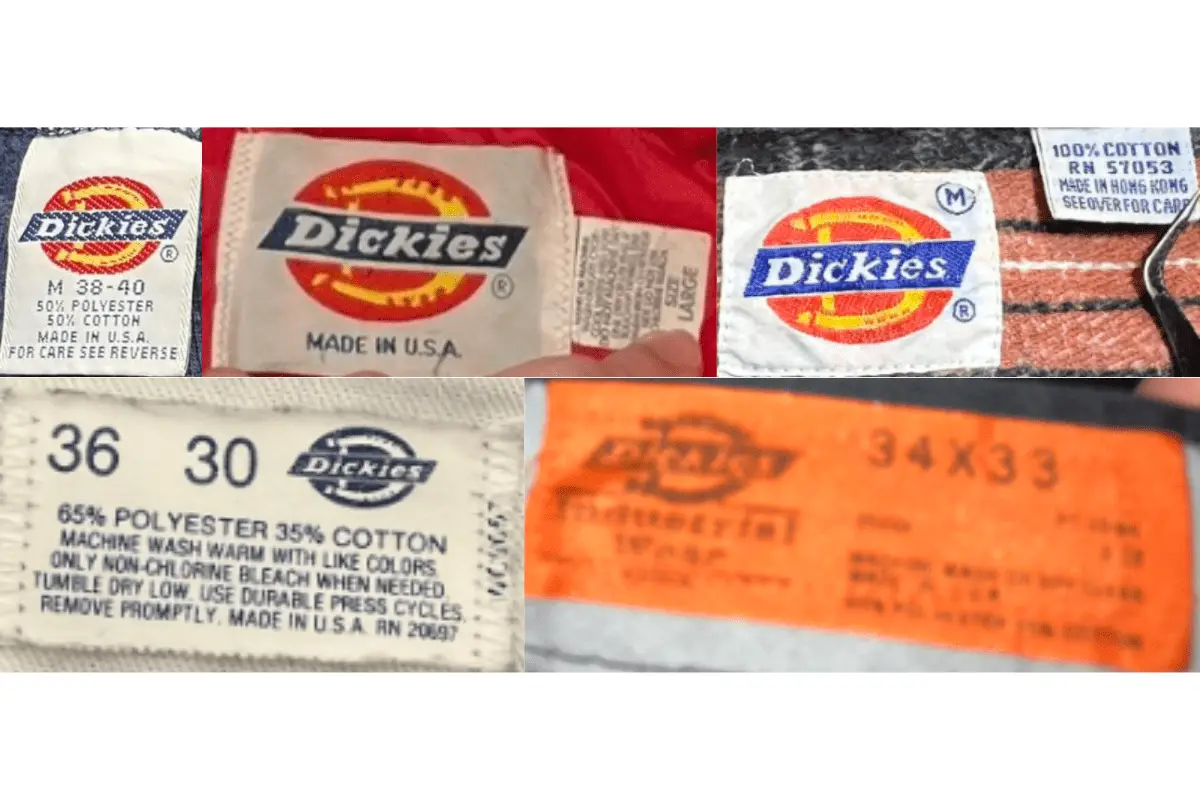
1980s Dickies tags
1990s vintage Dickies tags
- Similar design but adds international sizing
- Prominent colorful logo identifies authenticity
- More detailed size and care instructions
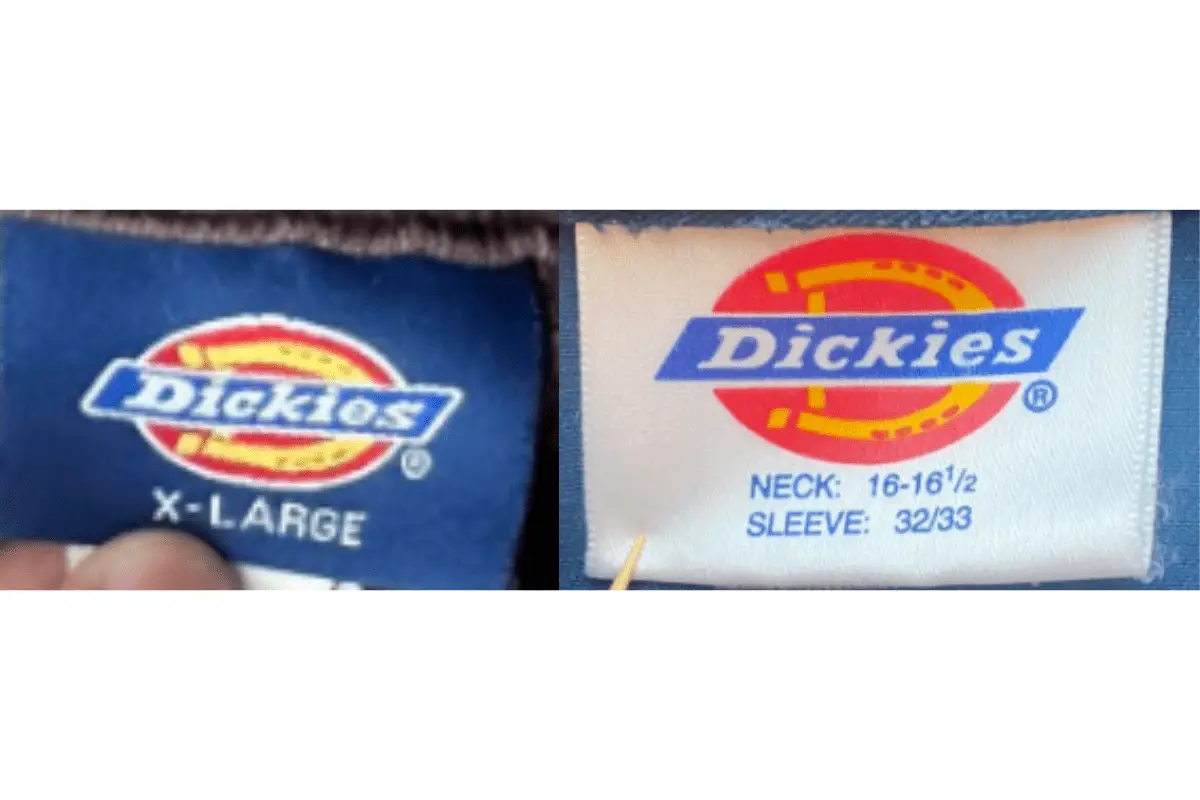
1990s Dickies tags
2000s vintage Dickies tags
- Loop tags introduced for versatile usage
- Black and navy backgrounds become more common
- Separate tags provide detailed care instructions
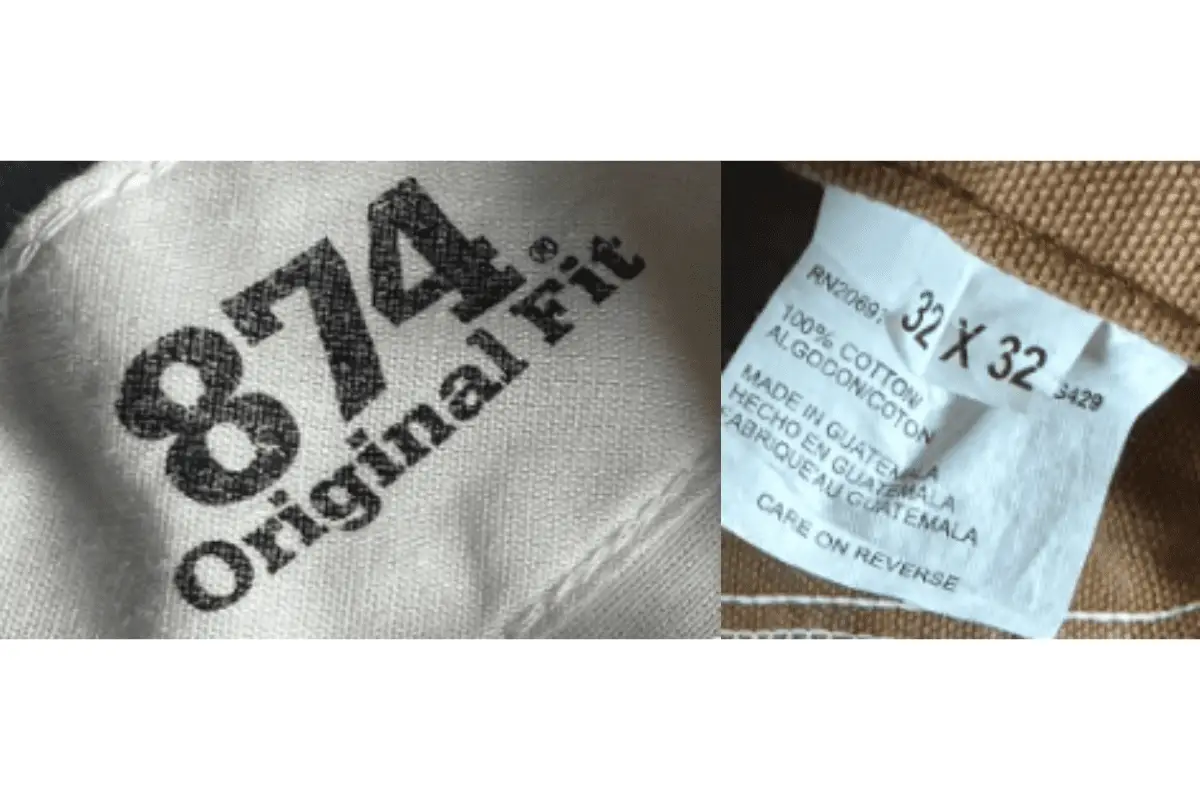
2000s Dickies tags
2010s vintage Dickies tags
- Refined designs with clear size information
- Include sleeve lengths and detailed care instructions
- Reflects a diverse and international audience
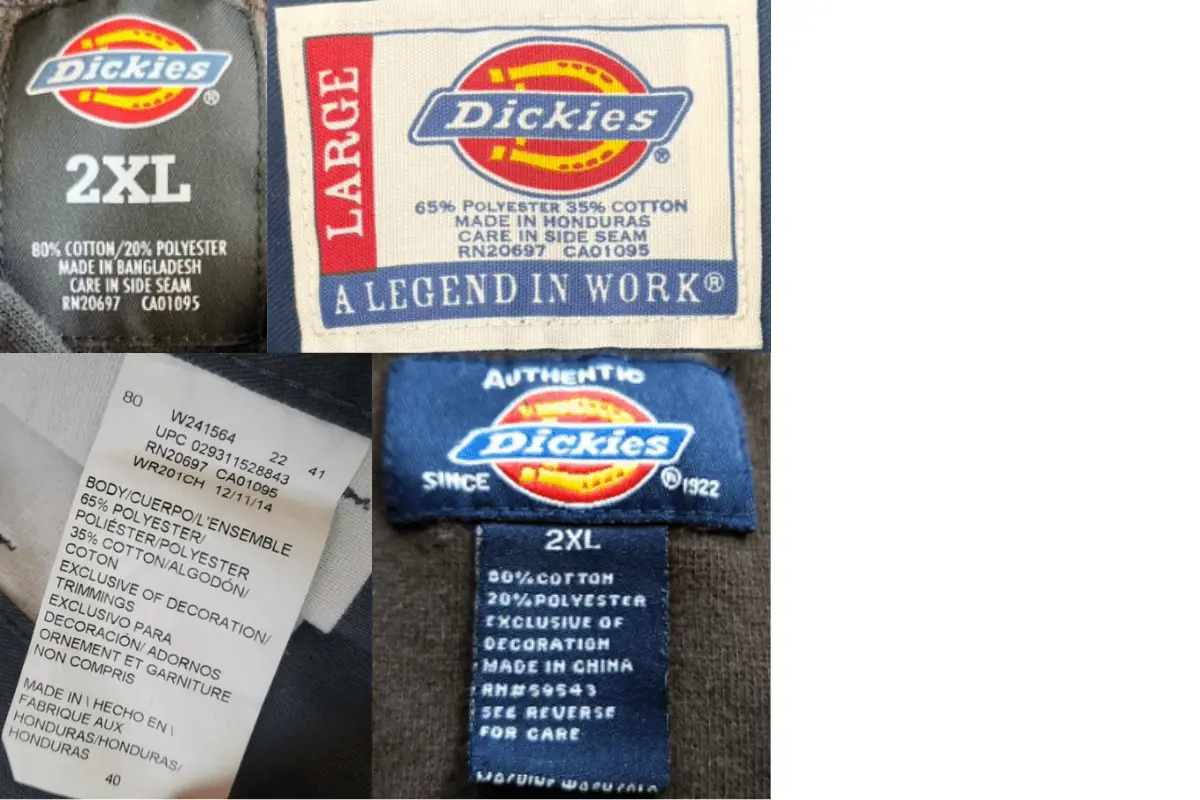
2010s Dickies tags
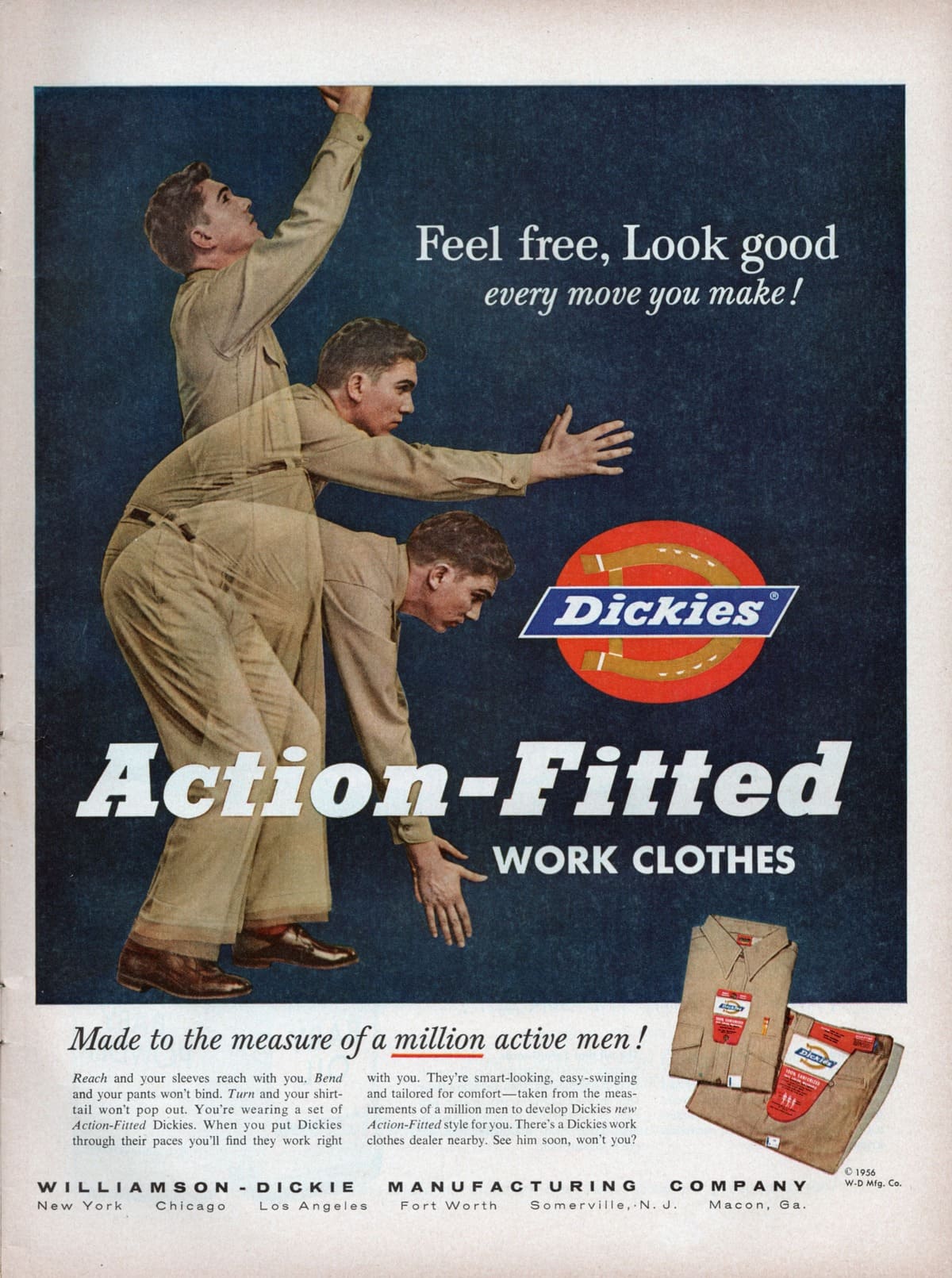




This is very attention-grabbing, You are an excessively professional blogger. I have joined your feed and look ahead to searching for more of your wonderful post. Also, I have shared your website in my social networks!
I can recommend to visit to you a site on which there is a lot of information on a theme interesting you.
——
https://1businessworld.com/pro/findycarno/
On mine, it not the best variant
——
https://ssl.by/tags/%D1%81%D1%82%D1%80%D0%BE%D0%B8%D1%82%D0%B5%D0%BB%D1%8C%D1%81%D1%82%D0%B2%D0%BE%20%D1%8D%D0%BD%D0%B5%D1%80%D0%B3%D0%BE%D0%BE%D0%B1%D1%8A%D0%B5%D0%BA%D1%82%D0%BE%D0%B2/
I am final, I am sorry, but it not absolutely approaches me. Who else, what can prompt?
——
https://www.hostboard.com/forums/showthread.php?t=1228666&p=2956198#post2956198
What necessary words… super, excellent idea
——
https://xsg.ru/analitika/389-1a9bdeba552b2e57911b703d25af8e4b.html
Excuse, I have thought and have removed the idea
——
https://xtd.ru/tags/%D1%83%D1%81%D1%82%D0%B0%D0%BD%D0%BE%D0%B2%D0%BA%D0%B0%20%D1%80%D1%83%D1%81%D1%81%D0%BA%D0%BE%D0%B3%D0%BE/
I believe, that you are not right.
——
https://the.hosting/pt/help/como-desinstalar-o-nginx-no-ubuntu